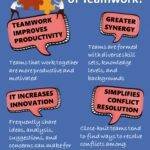
The group decision-making
Decision-making is an integral part of any team activity. Group decision-making involves a sequence of activities that includes “gathering, interpreting and exchanging information, creating and identifying alternative courses of action, choosing among alternatives by integrating the often differing perspectives and opinions of team members; and implementing a choice and monitoring its consequences” (Thompson, 2008, p.166).
Sometimes teams can follow a flawed process, by not exchanging enough information and exploring inadequate alternatives, and make erroneous conclusions. Groupthink is one such pitfall of decision-making.
The aim of this article is to explore the role leadership plays in enhancing as well as mitigating groupthink in team decision-making processes.
The Leader’s Role
A leader is one who has the ability to influence members of a team to work effectively towards their goals. Among the antecedents of groupthink, it is the leader’s role that has received the most empirical attention (Ahlfinger & Esser, 2001).
Leana (1985) has found that leader behavior strongly influences the number of alternative solutions proposed and discussed by groups and the actual final decisions made by them. Cognitively complex and open leaders are more receptive to new information and are thus more flexible about their beliefs than their cognitively closed and simple counterparts (Ziv, 2008).
While Janis’ (1972) model of groupthink emphasizes that members get influenced by the leader’s suggestions because they identify with the leader’s values and goals, Courtright suggests it’s more of a compliance issue (Courtright, 1977).
Leader-Member Relationship
Leaders do not treat all the members of the team equally and maintain distinct relationships with different members (Thompson, 2008). This can lead to ingroups and outgroups being formed within a team, impacting group cohesiveness.
Though Janis (1972) has linked high cohesiveness to groupthink symptoms, Leana (1985) found that cohesiveness has a positive effect in the information gathering stage of decision-making with these “concurrence seeking ingroups” (p. 15) being more watchful in their information gathering which may or may not affect later stages of decision-making.
A double-edged sword, group cohesiveness can be affected by leader-member relationships and leaders should be mindful of this fact.
Power Motivation
Studies have found that group leaders who are high in power motivation foster an atmosphere that is detrimental to group decision-making. In an experiment conducted on college students, Fodor and Smith (1982) discovered that people with low scores on power motivation shared more information with the group and also considered more options before narrowing down on a decision.
Though Janis’ groupthink model does not explicitly mention it, leaders can use legitimate, referent and expert power to dole out rewards and punishments and in that affect the decision-making process (Flowers, 1977).


